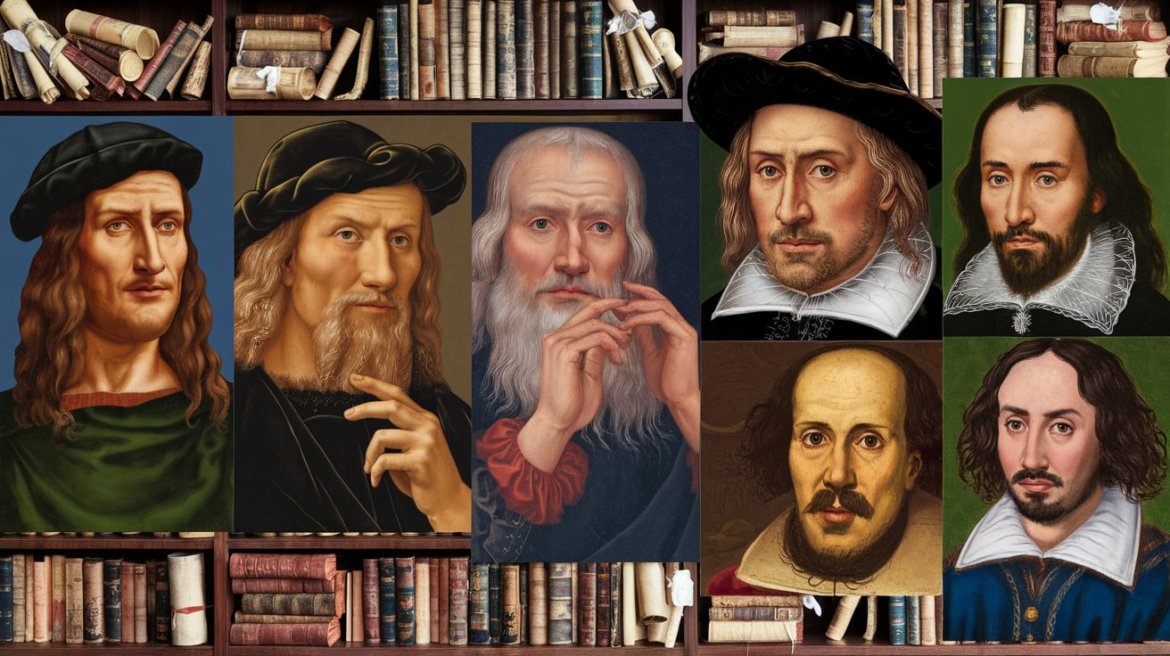Many Renaissance thinkers NYT were at the heart of shaping modern knowledge and ideas. These brilliant minds contributed to fields like art, science, philosophy, and more, leaving behind legacies that still impact us today. When we think of the Renaissance, we often picture iconic figures such as Leonardo da Vinci, Michelangelo, and Galileo, but the term “Renaissance thinkers” refers to a wide array of individuals who explored and expanded our understanding of the world.
The New York Times has often celebrated the influence of many Renaissance thinkers in its crosswords, often using terms like “polymaths” to describe these intellectual giants. These thinkers didn’t just focus on one area of knowledge. Instead, they were experts in multiple disciplines, blurring the lines between art, science, and philosophy. This versatility is one of the key features that set Renaissance thinkers apart from other scholars in history. By mastering many subjects, they created new ways of thinking and problem-solving that continue to inspire people today. Their work played a crucial role in bridging the gap between the Middle Ages and the modern world.
What Makes Many Renaissance Thinkers NYT So Important?
Many Renaissance thinkers NYT were key in transforming intellectual history. Their importance lies in their ability to bridge different areas of knowledge, bringing together art, science, literature, and philosophy. These thinkers helped pave the way for the modern world by challenging old ideas and introducing fresh perspectives. Their work, whether in art, politics, or mathematics, reshaped society’s understanding of human potential. What makes them truly important is how they didn’t limit themselves to one discipline but explored several fields, becoming masters of many. This ability to think beyond boundaries set the stage for innovations that continue to influence us today, making the legacy of Renaissance thinkers invaluable.
Exploring the Contributions of Many Renaissance Thinkers NYT
The contributions of many Renaissance thinkers NYT were varied and revolutionary. These thinkers didn’t just excel in one subject; they often contributed to multiple areas of study. For example, Leonardo da Vinci was not only a painter but also an engineer, scientist, and inventor. Galileo, a key figure of the Renaissance, helped lay the groundwork for modern physics and astronomy. These individuals advanced human knowledge by pushing the boundaries of what was possible in their time. Whether through their inventions, discoveries, or artistic achievements, their work reshaped not just their respective fields, but the world itself, making their contributions essential to the development of modern society.
How Many Renaissance Thinkers NYT Changed Our View of the World
Many Renaissance thinkers NYT dramatically altered our view of the world, especially in how we perceive knowledge and discovery. Before the Renaissance, much of human understanding was confined by traditional religious views. Thinkers like Copernicus and Galileo challenged these old ideas by presenting evidence-based theories, such as the heliocentric model of the solar system. This shift in thinking encouraged people to question old assumptions and seek new explanations grounded in observation and reason. The innovations of these thinkers not only influenced science but also had a lasting impact on philosophy, art, and politics, leading to the development of more open, inquisitive societies.
The Lasting Legacy of Many Renaissance Thinkers NYT
The lasting legacy of many Renaissance thinkers NYT is seen in almost every field today. Their forward-thinking ideas laid the foundation for modern science, art, and philosophy. The Renaissance period sparked a curiosity-driven approach to learning that has endured for centuries. Thinkers like Erasmus and Michelangelo set high standards for intellectual and creative achievement, inspiring generations of individuals to pursue knowledge and question the world around them. Their work has not only influenced other intellectual movements like the Enlightenment but has also shaped modern-day institutions of learning. The legacy of their contributions remains embedded in education, culture, and even in today’s technological advancements.
What Can We Learn from Many Renaissance Thinkers NYT Today?
We can learn a great deal from many Renaissance thinkers NYT, especially their dedication to lifelong learning and cross-disciplinary knowledge. Renaissance thinkers often believed that no area of knowledge was too small to explore, and they constantly sought to expand their intellectual horizons. Today, this approach can teach us the value of being curious and open-minded in all aspects of life. They also showed that combining art, science, and philosophy can lead to breakthroughs in understanding. The Renaissance thinkers were not afraid to challenge the status quo, and in today’s world, we can learn to think creatively, solve problems innovatively, and stay open to new ideas in our own lives.
A Deep Dive into the Minds of Many Renaissance Thinkers NYT
A deep dive into the minds of many Renaissance thinkers NYT reveals a fascinating blend of creativity, intellect, and curiosity. These individuals weren’t just focused on perfecting their craft but were also driven by a desire to understand the world on a deeper level. They often crossed traditional boundaries, working in multiple disciplines to gain a fuller understanding of life. For instance, da Vinci’s notebooks were filled with observations on everything from anatomy to engineering, while Michelangelo’s work was not only artistic but also philosophical. By exploring their lives and thought processes, we can uncover the passion and curiosity that fueled their innovations, which continue to inspire us today.
Polymaths: A Key Feature of Many Renaissance Thinkers NYT
Polymaths were a key feature of many Renaissance thinkers NYT, and their ability to master multiple fields of knowledge was a hallmark of the time. A polymath is someone who is skilled in several areas of study, and many Renaissance thinkers, such as Leonardo da Vinci and Galileo Galilei, fit this description perfectly. They didn’t restrict themselves to one field but used their diverse skills and knowledge to approach problems from different angles. This ability to cross disciplines led to groundbreaking discoveries and innovations that transformed many aspects of society. The rise of polymaths during the Renaissance era encourages us to be versatile in our pursuits and embrace learning in various fields.
The Role of Many Renaissance Thinkers NYT in Modern Art and Science
The role of many Renaissance thinkers NYT in modern art and science cannot be overstated. Their ideas formed the bedrock upon which much of modern thought is built. In art, figures like Leonardo da Vinci and Michelangelo revolutionized techniques, moving away from medieval styles and embracing a more realistic portrayal of the human form. In science, thinkers like Galileo and Copernicus challenged the traditional views of the cosmos and laid the groundwork for modern astronomy and physics. Their influence is still seen today in how we approach both artistic expression and scientific inquiry. They were the true pioneers of their time, laying the path for future advancements.
Discovering the Minds Behind Many Renaissance Thinkers NYT
Discovering the minds behind many Renaissance thinkers NYT opens up a world of brilliant individuals who changed the course of history. These thinkers weren’t just artists or scientists—they were visionaries who saw the world in a different way. Their ability to combine knowledge from various fields allowed them to see connections that others couldn’t. Understanding their thought processes and motivations gives us insight into how their groundbreaking work shaped the modern world. From their love of learning to their courage in challenging the norms, their lives serve as an inspiration for anyone who wants to make a meaningful impact on society.
How Many Renaissance Thinkers NYT Shaped Modern Philosophy and Knowledge
Many Renaissance thinkers NYT played a crucial role in shaping modern philosophy and knowledge. Before the Renaissance, philosophical thought was largely influenced by the Church and traditional beliefs. However, Renaissance thinkers like Erasmus, Machiavelli, and Thomas More introduced ideas that focused on humanism, reason, and individualism. These new perspectives laid the groundwork for modern philosophy, ethics, and political thought. They encouraged a move away from purely theological explanations and toward a more secular, inquiry-driven approach to understanding the world. The impact of their work is still seen in contemporary philosophy, ethics, and even politics, marking the Renaissance as a pivotal moment in intellectual history.
Conclusion
In conclusion, many Renaissance thinkers NYT have left a huge impact on the world that we can still see today. Their ability to think in many different ways helped shape modern science, art, and philosophy. They didn’t just stick to one field but explored many subjects, which allowed them to make great discoveries. We can learn from their curiosity, creativity, and willingness to challenge old ideas.
Their legacy is something we can still learn from, even today. By following their example, we can be more open to new ideas, explore different subjects, and think in creative ways. Renaissance thinkers showed us the power of learning, questioning, and always being curious. Their ideas continue to inspire and shape the world around us.
FAQs:
Q: Who were the many Renaissance thinkers NYT?
A: The many Renaissance thinkers NYT were scholars who made important contributions to art, science, philosophy, and more. They are known for thinking creatively across multiple fields.
Q: How did many Renaissance thinkers NYT change the world?
A: Many Renaissance thinkers NYT changed the world by challenging old ideas and discovering new ways to look at science, art, and philosophy.
Q: What is a polymath, and how does it relate to many Renaissance thinkers NYT?
A: A polymath is someone who excels in many areas of study. Many Renaissance thinkers NYT were polymaths who contributed to many different fields.
Q: Can we learn anything from many Renaissance thinkers NYT today?
A: Yes, we can learn to be curious, think creatively, and explore different fields just like Renaissance thinkers did.
Q: Why are many Renaissance thinkers NYT important in modern education?
A: They are important because they helped shape how we learn and think today, showing us the value of being well-rounded and open-minded.

